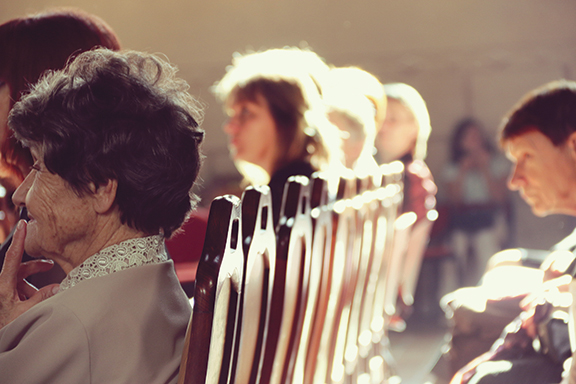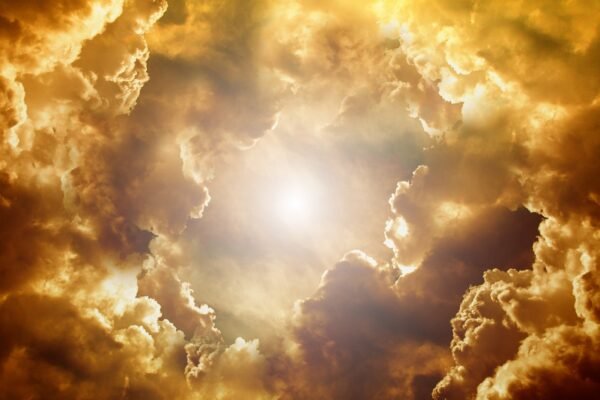The Church of God (Seventh Day) has observed two ordinances since our inception in 1858. We have always baptized new converts by immersion in water, in the name of Jesus. But our observance of the Lord’s Supper service evolved from “whenever” to annually. Unfortunately, our observance of the Lord’s Supper service has been beset by much unnecessary controversy over the years.
Beginnings
After the Church of Christ in Michigan (former name of the Church of God [Seventh Day]) was organized in 1858, and her congregations grew, she began holding quarterly weekend meetings that rotated among her churches. They began on Friday evening with an opening preaching service, followed by a full day of preaching on Sabbath, and concluded with observing the Lord’s Supper and foot washing on Sunday afternoon before dismissal.
These popular weekend services drew large crowds from the statewide membership. They were frequently attended by representatives from independent Sabbathkeeping churches whose teachings likened those of the Church of Christ, such as the Church of God in Wisconsin and occasionally the Church of the First Born in New England.
But beside the quarterly meetings’ observance of a communion service, ministers of the churches of Christ in Michigan and the churches of Jesus Christ in Iowa held communion services whenever they felt the occasion called for it.
Gilbert Cranmer reported conducting a funeral in northwestern Michigan one December and conducting preaching services for a few nights following the funeral, which he concluded with a communion service.
Samuel Davison held a Lord’s Supper service for the Church of Jesus Christ at Fairfield, Iowa, in July 1865. But by 1872, Davison had become convinced that the Lord’s Supper should be observed annually at the time of Jesus’ death in the spring. He wrote an article for The Hope of Israel purporting that Jesus instituted the Lord’s Supper the night before He was crucified on the Jewish Passover as a memorial to His impending death. Davison reasoned that the Passover, a memorial to Israel’s deliverance from Egypt, was an annual observance. Therefore, the Lord’s Supper, a memorial of Jesus’ death, should be observed annually like the Passover, around the time of the Passover.
Davison’s argument for an annual communion service received such wide support from the churches’ membership in Michigan, Iowa, and Missouri that Jacob Brinkerhoff, editor of The Hope of Israel, began publishing an annual date for the churches to observe the Lord’s Supper. Brinkerhoff did not have access to a Jewish calendar to know the exact date of the annual Passover. Therefore, he published dates near the spring equinox so all the churches that subscribed to an annual communion service could observe it in unison.
Eventually Brinkerhoff learned of the perpetual calendar for all the Hebrew festivals, and he published the actual date of the Passover as the date for observing the Church’s annual communion service. He announced the date for the annual Lord’s Supper service for 1885 in the Advent and Sabbath Advocate magazine: “The 14th day of the first month (Passover), occurs this year on the night after Sunday, March the 30th, according to Roman time.”
However, the Church gave members freedom to observe their communion service at the beginning of the Passover on the fourteenth of Nisan, or twenty-four hours later on the beginning of the fifteenth day (the beginning of the annual Passover Sabbath). Some members believed that was when the Israelites kept the first Passover in Egypt and that memorializing Jesus’ death should follow His crucifixion.
Developments
The annual observance of the Lord’s Supper on the date of the Passover became an official doctrine of the Church of God when Andrew N. Dugger, president of the General Conference, included a doctrinal statement in his revision of its doctrines in 1917.
But by the 1920s, Dugger was teaching that the Lord’s Supper must be observed precisely in the evening following the thirteenth and at the beginning of the fourteenth day of Nisan, according to the Hebrew calendar. He rightly contended that Jesus gathered in the upper room with His disciples and instituted the Lord’s Supper at the beginning of the fourteenth of Nisan. However, in recognizing that the Lord’s Supper is a memorial to Jesus’ death, Dugger persisted in referring to it as the Passover, causing confusion and contention over its real purpose and date of observance.
Reportedly, the Church’s ministry devoted three full days of intense debate on the subject in 1933, without resolving the issue. But the Church’s Ministerial Council adopted a doctrinal statement in 1949 that said, “The Lord’s Supper . . . should be observed annually (on the beginning of the fourteenth of the Hebrew month Nisan).”
The fourteenth of Nisan became the official time for the Church of God to observe the Lord’s Supper, but her ministerial body made a verbal concession known as the “gentleman’s agreement” in 1948. It permitted some members or congregations to observe their communion service twenty-four hours later at the beginning of the fifteenth of Nisan, if they wished to do so. But even then there were critics of that concession who referred to them as “the fifteeners.”
Current thought
By the 1980s the Church of God was becoming more Christ centered and grace based, and the Ministerial Council’s 1994 revision of the Church’s doctrines incorporated the gentleman’s agreement: “Because the first Lord’s Supper was at Passover, we have chosen to observe it on Nisan fourteen of the Hebrew calendar. We extend charity toward those who may observe communion at other times.”
Currently the Church of God’s Statement of Faith concerning the observance of her communion service says, “We observe this Supper annually in the season it was instituted and are charitable toward those who observe it at other times.”








